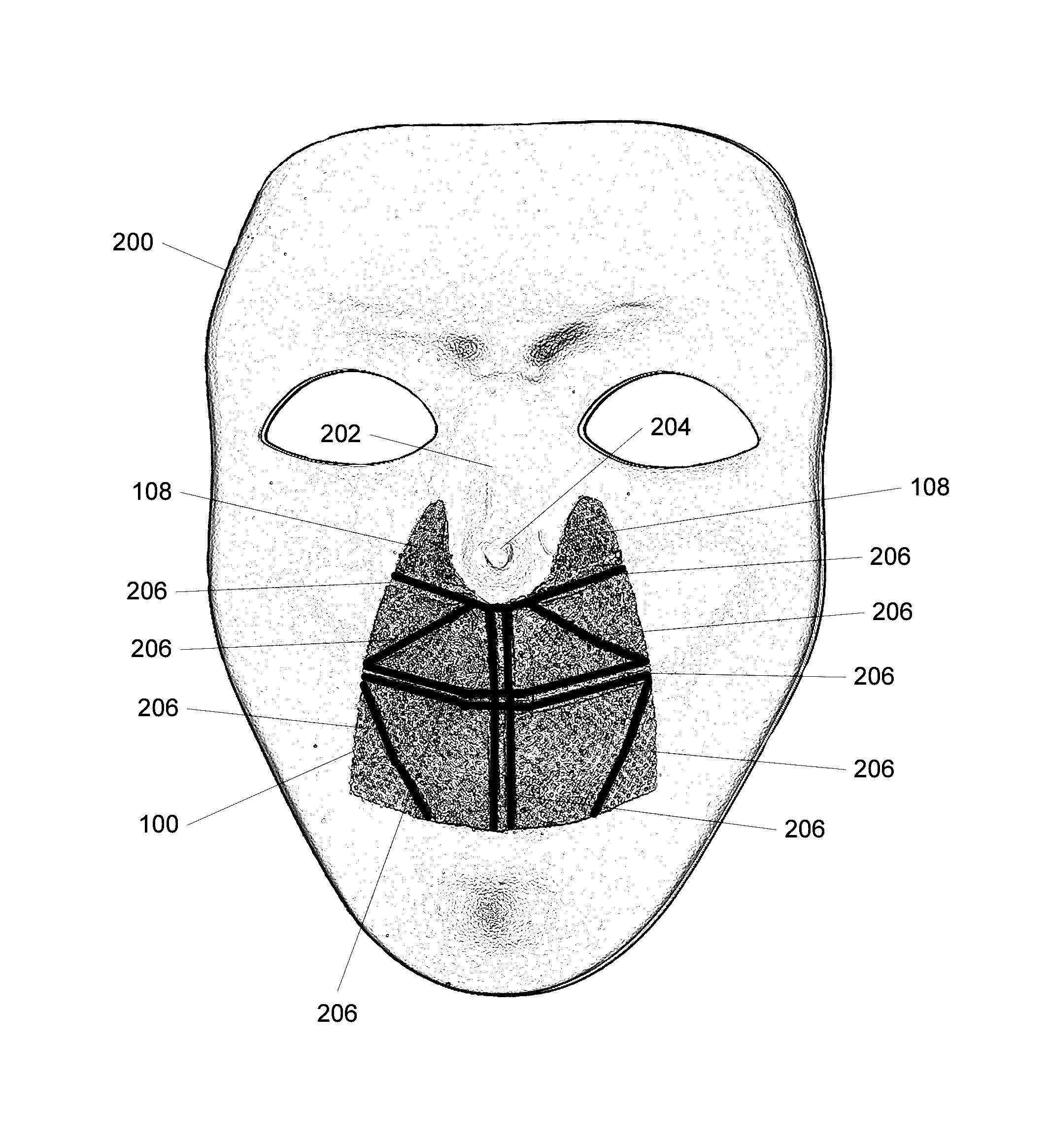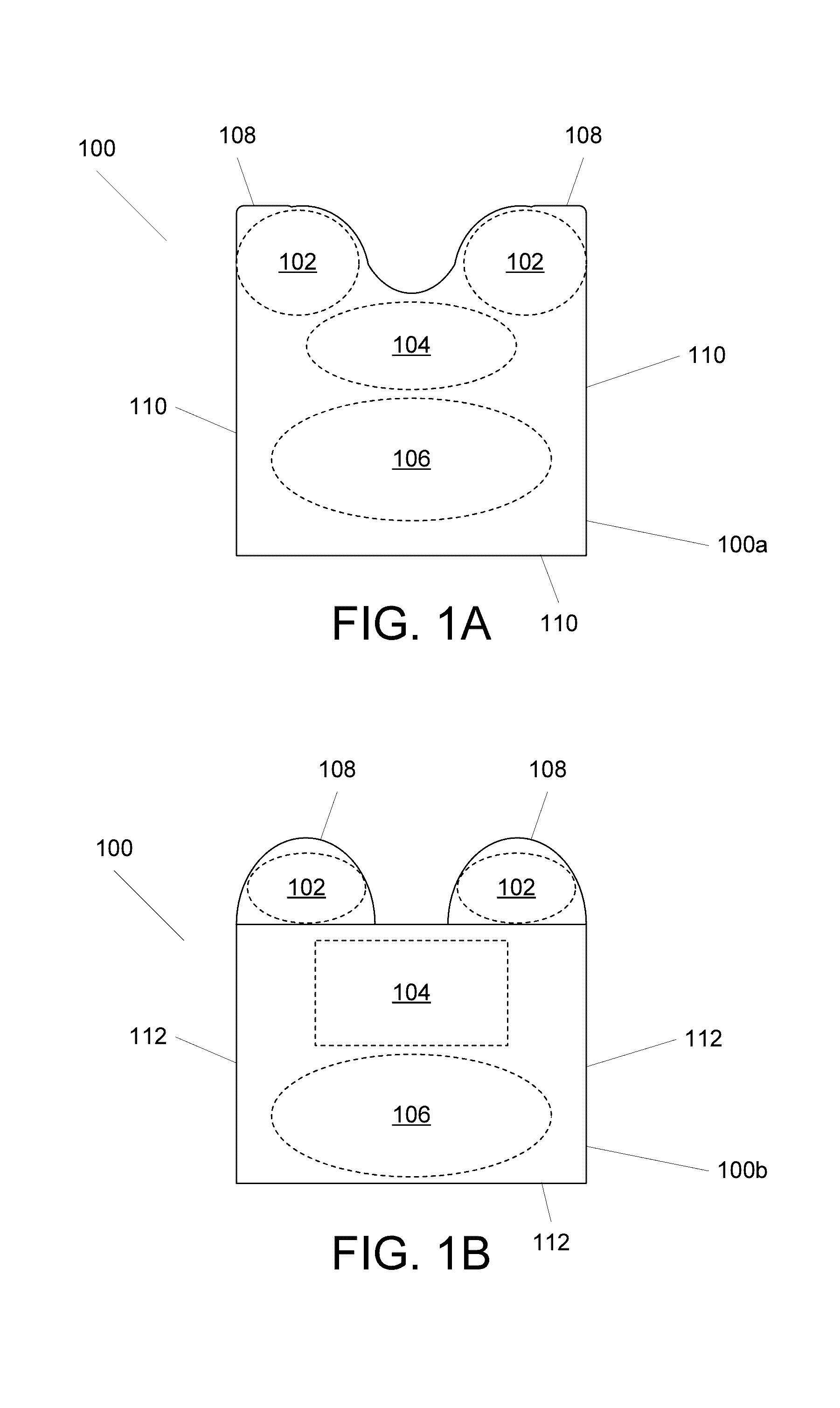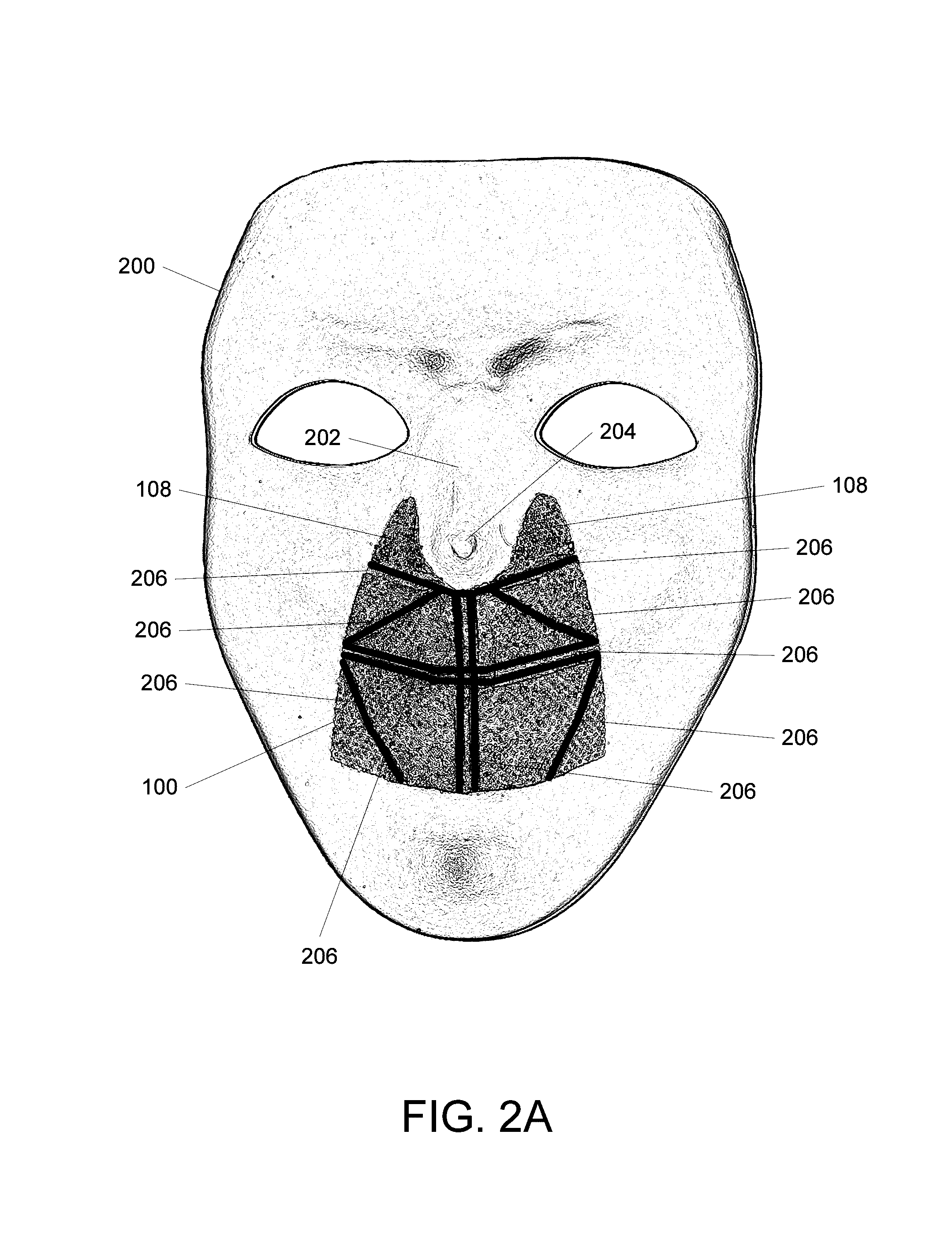Draping particulate filter for the nostrils and mouth and method of manufacture thereof
a particulate filter and nasal and mouth technology, applied in the field of draping particulate filters, can solve the problems of ineffective masks, certain forms of cancer, and toxicity of placental blood, and achieve the effects of reducing potentially harmful pm2.5 exposure, less intrusion, and easy manufacturing
- Summary
- Abstract
- Description
- Claims
- Application Information
AI Technical Summary
Benefits of technology
Problems solved by technology
Method used
Image
Examples
Embodiment Construction
[0038]I have devised a particulate filter configuration for the nostrils and mouth that can be manufactured as a flat sheet, does not need to be inserted into the nostrils at all, is reposition-able, and conveniently allows for activities such as eating, drinking, blowing one's nose while providing greater protection than removal of a face mask would provide.
[0039]For simplicity, as used herein, the term “diaphanous PM filter material” is intended to mean any light, floaty, supple, flimsy and / or thin particulate filter material, including nano-fiber or carbon nanotube filter material, that has a filter efficiency of at least PM2.5 and, more ideally, a filter efficiency of at least PM1, and a differential pressure ΔP (“breathability”) measurement of 2O / cm2 as measured according to ASTM F2100, European standard EN 14683 or other appropriate alternative standard such that an inhalation-induced pressure differential, or suction caused by inhalation, will cause the material to move in th...
PUM
| Property | Measurement | Unit |
|---|---|---|
| diameter | aaaaa | aaaaa |
| thickness | aaaaa | aaaaa |
| thickness | aaaaa | aaaaa |
Abstract
Description
Claims
Application Information
 Login to View More
Login to View More - R&D
- Intellectual Property
- Life Sciences
- Materials
- Tech Scout
- Unparalleled Data Quality
- Higher Quality Content
- 60% Fewer Hallucinations
Browse by: Latest US Patents, China's latest patents, Technical Efficacy Thesaurus, Application Domain, Technology Topic, Popular Technical Reports.
© 2025 PatSnap. All rights reserved.Legal|Privacy policy|Modern Slavery Act Transparency Statement|Sitemap|About US| Contact US: help@patsnap.com



